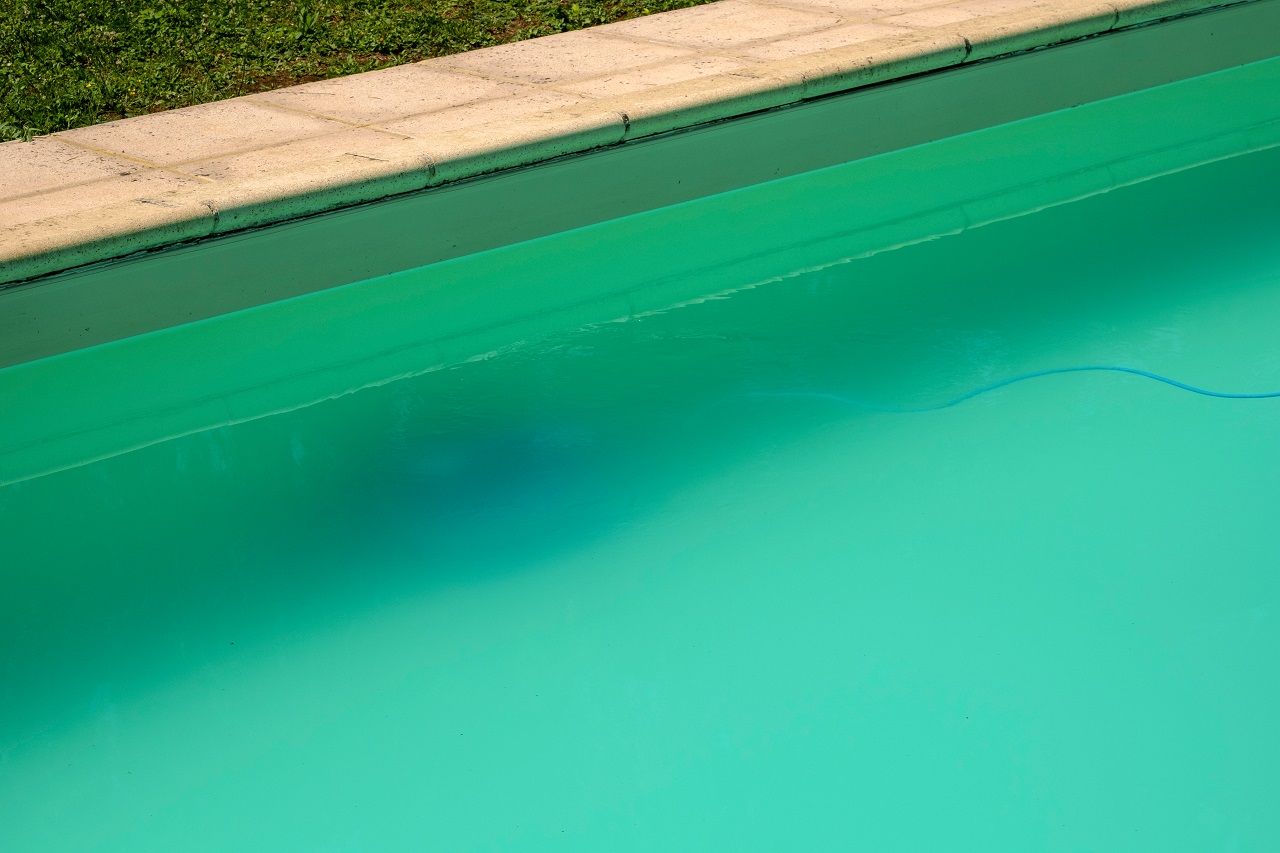
Learn How to Clear a Cloudy Pool Here
Want to get rid of the swampy water in your pool? Today we’ll show you the right steps in how to clear a cloudy pool!
Dirty pools can certainly be a hassle. Not only do they give a bad impression of your pool, but you’ll probably have a bad time cleaning the water as well. That’s why it’s imperative that you know exactly what to do when finding yourself in this case.
Why Did My Pool’s Water Turn Cloudy Out of the Blue ?
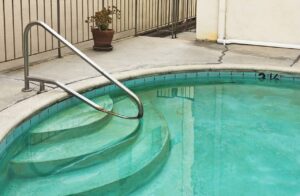
Having a pool with murky water is a dreadful situation for any pool owner. For this reason, you should be aware of some of the main causes behind this sort of issue before knowing the process of how to clear a cloudy pool.
That way, you’ll know exactly how to prevent it from happening ever again. Not only that, but you’ll also be able to provide the pool maintenance that’ll grant it longevity.
Here are some common reasons why your pool’s water turns cloudy:
- A broken pool filter
- Imbalanced pool chemicals
- Lots of mineral deposits and debris
- Pool algae might start developing
A Broken Pool Filter
A pool’s water circulation is among the most essential steps in preventing cloudy water and algae growth. When counting on a broken pool filter, then it can certainly make your pool look as if it turned into a swamp.
By relying on a pump and filter that’s in good shape, your pool will remain free of debris. Be sure that the pool’s filtration system is set at the right speed.
Imbalanced Pool Chemicals
Moreover, another vital element regarding your pool’s maintenance is its chemical composition. Whenever your pool has high calcium or chlorine levels, then cloudy water might start to appear. Some common reasons for this chemical imbalance come rains and heavy usage of your pool.
That’s why you must keep in mind its total alkalinity, calcium, and chlorine levels. A good rule of thumb is to have your pool with its pH level between 7.2 and 7.6.
Moreover, you must keep its chlorine levels must be between 3 ppm to 5 ppm. Its calcium hardness should be between 180 ppm to 220 ppm. Lastly, its alkaline levels should be between 80 ppm and 120 ppm.
Lots of Mineral Deposits and Debris
If you regularly leave your pool without a cover for a long time, then it’s likely that the water will eventually become murky. After all, debris can get into your pool’s water.
If you constantly brush your pool, then debris shouldn’t be too much of a problem. However, if you neglect to skim and scrub it on a regular basis, then debris can start clogging up the filters. Additionally, some of the debris can sink down as well.
Pool Algae Might Start Developing
Pool algae are much more common than what you imagine. That’s why they are among the top culprits behind murky pool water. Whenever there are a chemical imbalance and lots of debris on your pool for a long period of time, algae can start to develop.
Eventually, algae can make your pool start having black spots.
5 Simple Steps in How to Clear a Cloudy Pool
Now that you know the main reasons why your pool’s water might be milky, it’s time for you to know how to solve this problem. Believe it or not, fixing this sort of issue is easier than what you might think. We’ll show you exactly what you’ll need to do.
Follow these steps in how to clear a cloudy pool:
- Use test strips to check the pool’s chemical levels
- Deep clean it using a pool brush
- Turn on the pool pump and filtration system
- Use pool clarifier and pool floc
- Shock your pool
Use Test Strips to Check the Pool’s Chemical Levels
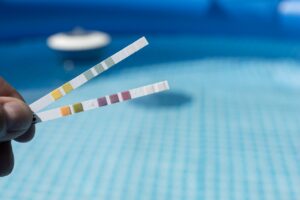
First, you must be aware of your pool’s chemistry. That way, you can be sure to know if your pool is either low on chlorine, high on calcium, or even both! That’s why we encourage you to use a testing kit to check your pool’s condition.
One great way to balance out your pool’s chlorine levels is by using a chlorine stabilizer.
Deep Clean It Using a Pool Brush

Next, you’ll want to get rid of any dirt or algae stuck on the bottom of your pool by scrubbing it. Be sure to use a quality pool brush or pool cleaner. Feel free to use a skimmer to remove any debris from the water’s surface.
Turn On the Pool Pump and Filtration System
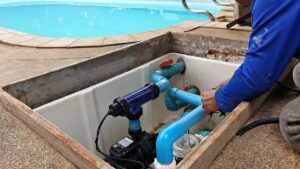
Just like we stated before in this blog, water circulation is key for your pool’s maintenance. For this reason, you’ll want to turn on the pump for 24 hours when clearing out the cloudy water. Moreover, be sure to clean or replace the filter as well before turning it on.
If you count on an in-ground pool, then you can open the bottom drain to help the water flow better. On the other hand, if you have an above-ground pool, then let the vacuum pool cleaner handle the job.
Use Pool Clarifier and Pool Floc
Next, you’ll have to pour a clarifier onto the pool. Pool clarifiers work great since they help prevent any debris from clustering up together. Try to keep the measure of 1 ounce of this product every 10,000 gallons of water.
Additionally, you can never wrong by using pool flocculants as well. Floc will help make all floating debris sink down to the bottom of your pool. That way, you can simply vacuum it later.
Shock Your Pool
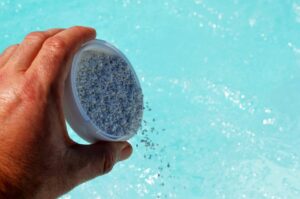
Last but not least, you need to shock your pool. When you regularly shock your pool, you’ll be able to prevent the cloudy water from happening ever again. Not only that, but you’ll effectively kill any harmful bacteria and algae as well.
Keep in mind that you should use a quality shock treatment. Moreover, if you count on a calcium hypochlorite solution, then use it every once in a while. The reason behind this is because this shock can raise calcium levels, thus turning your water murky again.
Knowing the right way in how to clear a cloudy pool, it’s time for you to take action! Don’t hesitate to contact professional help whenever you need it.




